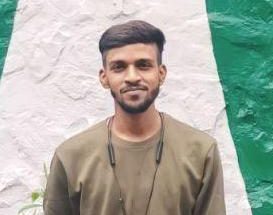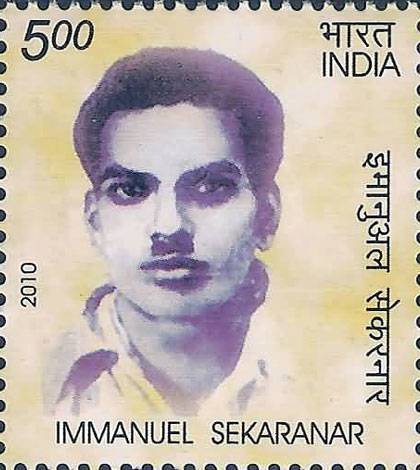Political symbols play a major part in the way a nation is depicted andfed into the imagination of its citizens (Anderson 1983). This symbolicwork manates generally from the official realm but, as this study willshow, it may also derive from the initiatives of political parties and cialorganisations. Thus, different actors involved in the public sphere insiston particular symbols or .great men. that express their different ideologies,different ideas of the nation and identity struggles. These political symbolsappeal to people at a more private level, reflecting the internalisation ofa political imaginaire that contradicts the usual notion of fixed boundaries between state and society. Indeed, as this article seeks to show, it testifiesto the circular influence of both in the realm of popular culture (Fullerand Harriss 2000).The Ambedkar icon, which has become the symbol of Dalit identity,provides an interesting case study of the understanding of and strategiestowards the state by the unprivileged in India. Attention to the meaningsassociated with symbols like the Ambedkar statues by those who mobilise around them thus assists our understanding of grassroots perceptionsof Indian democracy. In the context of poverty and illiteracy where theyoperate, such symbolic means have profound political implications, promoting ideals of citizenship and nationhood among the politicallydestitute where the state has partially failed. This article seeks to emphasise the instrumental importance of the Ambedkar icon and its contribution to what Khilnani has called the .deep politicisation. of indiansociety (Khilnani 1997).In a recent study on the politics of a Muslim brotherhood in Senegal,Donal Cruise O.Brien goes beyond the conventional opposition betweenethnicity and nationhood to consider the way .symbolic confrontations.by ethnic organisations sustain participation and thus deepen the feeling of nationhood among illiterate citizens. Such increased participationimplies fundamental changes in the way the disadvantaged perceive andrelate to the state:Ideas of participation include the idea that one can organise in makingdemands of the state, that one can bring the state to act on one.s behalf.In this deep process of social adjustment the symbolic confrontationhas a central role, promoting sectional interests, yes, but in a dialogue with the state, engaging people.s loyalties, in the long run probablystrengthening the state, as an institution with its place in the citizens.imagination (O.Brien 2003: 29). The author emphasises the pedagogic dimension of the symbol, whichis part of the emergence of a political language, enabling larger numbersof people to define themselves in relation to the state, if you will to makesense of the state. (O.Brien 2003: 26). O.Brien.s argument can be extendedto other post-colonial contexts, where the politicisation of the lower ordersand the use of religious symbols often go hand in hand. O.Brien takesthe example of the Indian struggle for freedom, in which Gandhi usedHindu symbols to appeal to the rural masses and bring them togetherwith the Congress against the colonial state. He also notes how this political pedagogy alienated Indian Muslims who were unable to findthemselves reflected in a nation defined by Hindu symbols, thus contributing to the communalisation process that led to Partition. This argumentcan also be applied to the case of radical .Untouchables./Scheduled Castes, led by B.R. Ambedkar (1891.1956), who distrusted Gandhi’s charitable attitude towards them. The latter.s reformed Hinduism was still too close to caste hierarchy to be acceptable to those who suffered from untouchability, and whose leaders feared for their future in an upper caste. dominated independent India (Ambedkar 1945).
Ambedkar.s relentless and bitter struggle against Gandhi on thequestion of the recognition of the .Untouchables. as a separate minorityleft its mark on their collective destiny at several levels. At the sociallevel, the policy of positive discrimination that resulted from the compromise between the two leaders (known as the Poona Pact, 1932) en couraged education and social mobility. At the political level, Ambedkar.snomination as the head of the Constitution Drafting Committee was areconciliatory act by Gandhi, designed to involve the Scheduled Castesin the process of nation-building and thereby to sustain national inte gration (Zelliot 1988). However, despite this momentary and partialreconciliation with the Congress, Ambedkar.s struggles against Gandhileft their stigma on Dalit politics. Even though they were depicted nega tively in mainstream Indian historiography, these struggles were rem
embered in Ambedkarite circles as a landmark episode, because of whicha distinct Dalit political identity could be kept alive and nurtured afterIndependence.
Although Ambedkar had warned his admirers against making a cultof his personality, a move that had started in his home state of Maharashtraeven before his death (Tartakov 2000), the statue, perhaps inevitably, became a tool for political mobilisation after he died. The little bluestatues of Ambedkar wearing a three-piece suit and holding the IndianConstitution have indeed become a common sight in contemporary slumsand villages in many parts of the country. This article narrates the history of these statues in Uttar Pradesh (UP), where the Bahujan Samaj Party (BSP), a political outfit led by AmbedkariteDalits, has formed several governments since the mid-1990s. The caseof Uttar Pradesh is especially interesting as far as Ambedkar statuesare concerned. First, the statues have played an instrumental role in theBSP.s successful mobilisations, confirming the popular appeal ofsymbolic politics in a state where the Ayodhya campaign had alreadyhelped the BJP to power in the early 1990s. Second, once in power theBSP put great emphasis on the official installation of statues, which inturn motivated Dalits to install more statues in their villages. The waythe state and society have emulated each other brings an interesting perspective to bear on symbolic politics and on the evolution of relationsbetween Dalits and the state. That is, the influence of the official Ambedkariconography on the popular statues, along with the imitation of officialceremonies in villages, reflects a process of popular learning of symbolicskills.
From Parliament to village: Ambedkar.s official image and its appropriation
The practice of setting up statues of political leaders on public sites wasintroduced into India by the British, who installed statues of soldiers andcivil servants of the Raj. After Independence, the practice was continuedwith the installation of statues of Gandhi and regional figures of theindependence movement, as well as historical figures such as Shivaji inMaharashtra. The first official statue of Ambedkar was set up in Bombayin 1962, at the Institute of Science crossing (the former ProvincialAssembly) (Tartakov 2000). Ambedkar was represented as an orator, dressed in a three-piece suit, his right arm and finger upraised as .a greatman lecturing the nation. (ibid.: 102). According to Tartakov, the messagewas both to the nation.on the dangers of caste and inequality.and tohis fellow Dalits, whom he urged to organise democratically to securetheir rights. In 1966, another statue made of bronze was set up in front of theNational Parliament in New Delhi and unveiled by the President of India,Dr S. Radhakrishnan. This national recognition of Ambedkar was a sig nificant move, as the .Untouchable. leader, despite having chaired theConstitution Committee, had been identified more or less as a traitor inthe dominant political stereotype of the ruling party ever since his opposition to Gandhi at the Round Table Conference. In the new political context of the mid-1960s, the decision to honourAmbedkar was an attempt by Indira Gandhi to woo the Ambedkariteconstituency of the Republican Party of India (RPI). At the Ahmedabad convention of the party in 1964, the RPI had adopted a charter of demands,focusing conspicuously (five out of ten points) on problems of poverty,minimum wage and landlessness. This emphasis on the economic demands of the landless peasants, which was designed to build an allianceof the rural poor across castes, is characteristic of the RPI.s socialistic emphasis, but the party.s first demand was for the installation of .a portraitof Dr Ambedkar as .Father of the Indian Constitution. in the central hall of Parliament. (Zelliot 1970). Taking up these demands, massivemobilisations took place in Uttar Pradesh, Punjab and Maharashtra inDecember 1964, when 300,000 demonstrators were arrested (Duncan1979: 246).
According to L.R. Balley, who was the Punjab leader of the RPI atthat time, Parliament officially voted to raise the statue around 1964.65,thanks to the support of the Speaker, Hukkum Singh, who had chairedAmbedkar.s welcome committee during the latter.s visit to Punjab in1936. The Sikh politician thus wished to give Ambedkar the national recognition that he felt he deserved as one of the nation-builders. Even ifAmbedkar.s image did not make it to the Central Hall of Parliament, amassive bronze statue was set up outside the premises, representing himin his three-piece suit with the Constitution in one hand, the other armpointing to the sky. The statue was made by the same official sculptor asthe one in Bombay, and its main novelty was that he added the Con stitution, probably to emphasise Ambedkar.s contribution to the nation. That is, the Parliament House statue insisted upon Ambedkar.s conformityto the national agenda rather than recalled his hostility towards Hinduism, which he saw as the essence of caste. While the Constitution thus fitted Ambedkar into a secular mould, it is interesting to note that the Constitution was given a radical meaning by Dalits. As Pauline Mahar-Mollerhas shown in a monograph on a village in western UP, Untouchables inter preted the Constitution as a new law replacing the .Hindu laws of caste.(Mahar-Moller 1958). This attempt at bringing Ambedkar within a nationalconsensus in the name of .secularism. did not prevent Ambedkaritesfrom emphasising their own radical understandings of Ambedkar. Onthe one hand, they took this official recognition as a welcome step thatgave them legitimacy; on the other they continued to publish biographiesof Ambedkar and other vernacular political pamphlets in which hisideology was unfolded more uncompromisingly.









